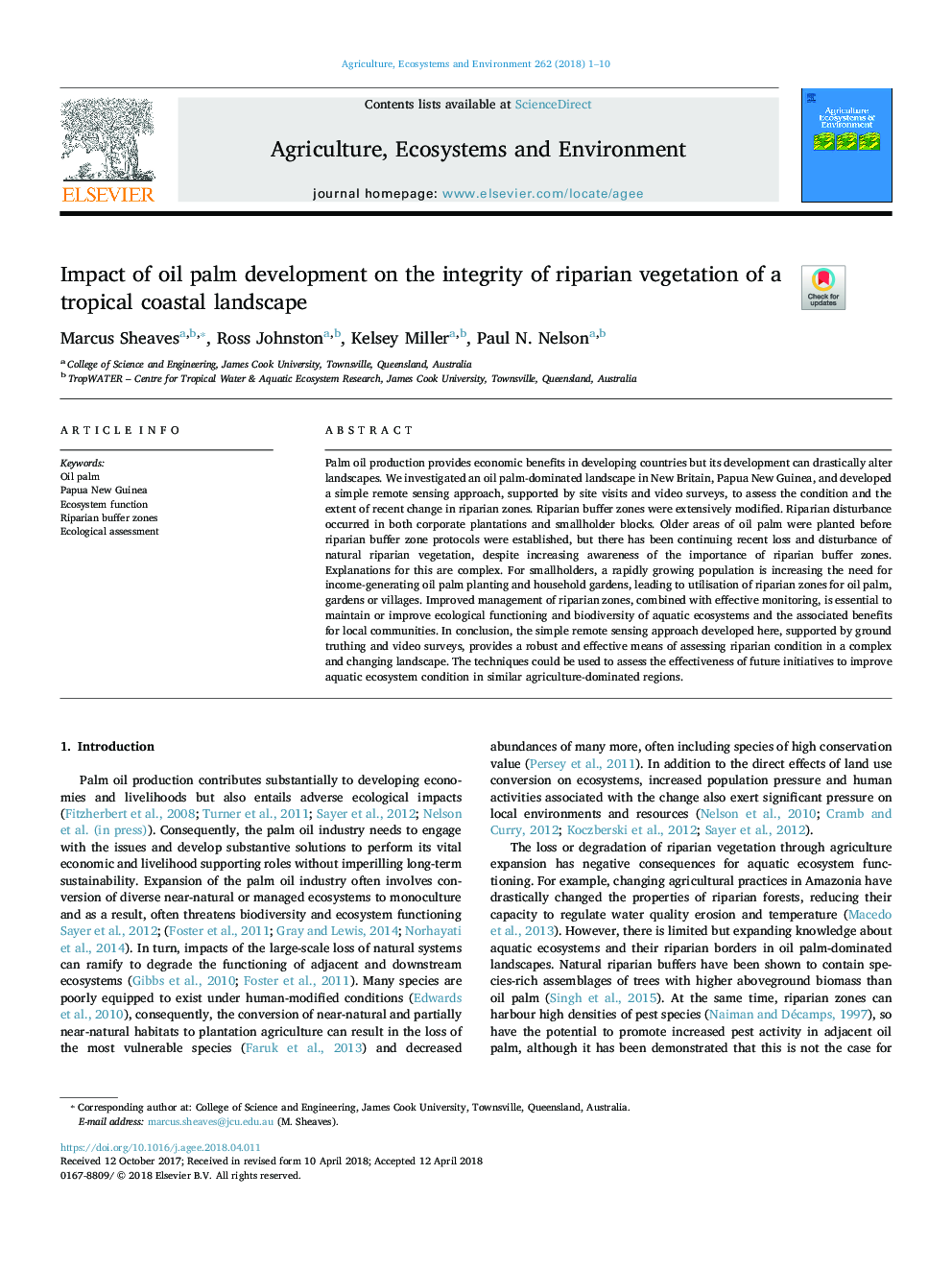| Article ID | Journal | Published Year | Pages | File Type |
|---|---|---|---|---|
| 8487041 | Agriculture, Ecosystems & Environment | 2018 | 10 Pages |
Abstract
Palm oil production provides economic benefits in developing countries but its development can drastically alter landscapes. We investigated an oil palm-dominated landscape in New Britain, Papua New Guinea, and developed a simple remote sensing approach, supported by site visits and video surveys, to assess the condition and the extent of recent change in riparian zones. Riparian buffer zones were extensively modified. Riparian disturbance occurred in both corporate plantations and smallholder blocks. Older areas of oil palm were planted before riparian buffer zone protocols were established, but there has been continuing recent loss and disturbance of natural riparian vegetation, despite increasing awareness of the importance of riparian buffer zones. Explanations for this are complex. For smallholders, a rapidly growing population is increasing the need for income-generating oil palm planting and household gardens, leading to utilisation of riparian zones for oil palm, gardens or villages. Improved management of riparian zones, combined with effective monitoring, is essential to maintain or improve ecological functioning and biodiversity of aquatic ecosystems and the associated benefits for local communities. In conclusion, the simple remote sensing approach developed here, supported by ground truthing and video surveys, provides a robust and effective means of assessing riparian condition in a complex and changing landscape. The techniques could be used to assess the effectiveness of future initiatives to improve aquatic ecosystem condition in similar agriculture-dominated regions.
Related Topics
Life Sciences
Agricultural and Biological Sciences
Agronomy and Crop Science
Authors
Marcus Sheaves, Ross Johnston, Kelsey Miller, Paul N. Nelson,
